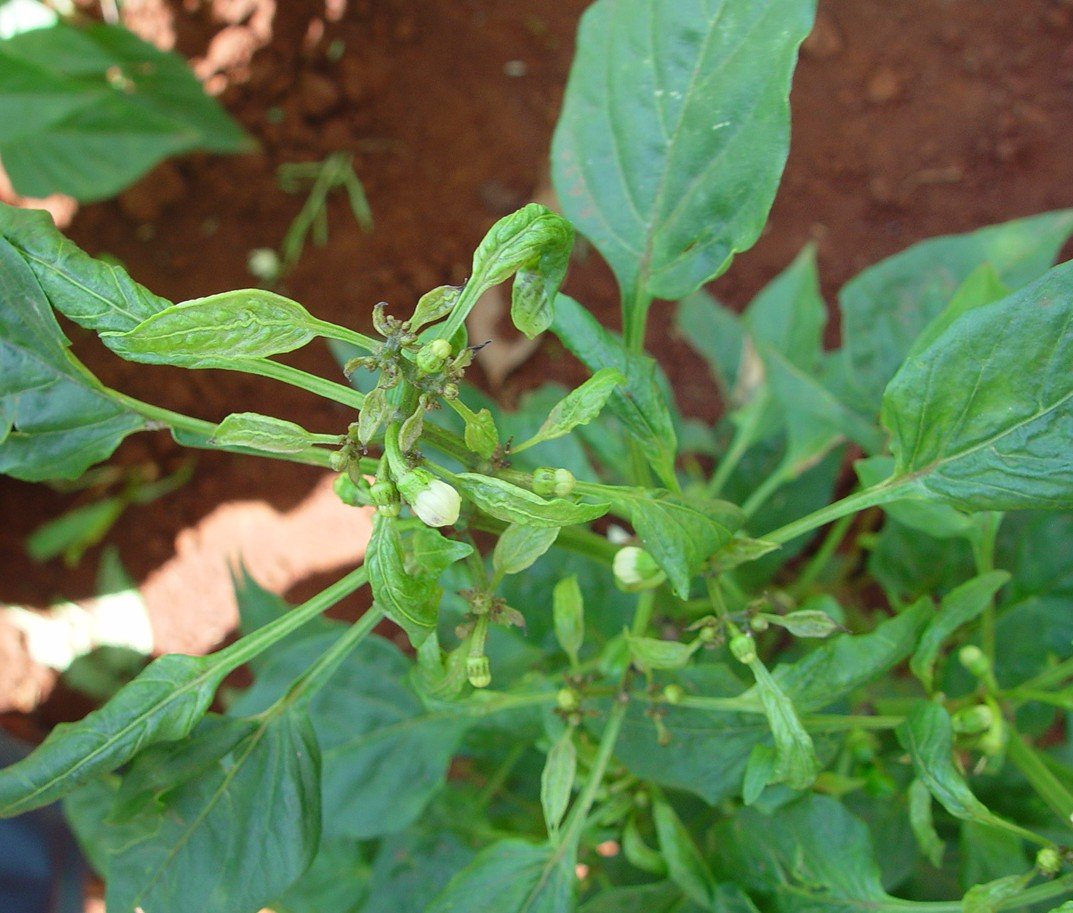(Polyphagotarsonemus latus)
Credits: Biovision-Infonet

(c) A.M. Varela, icipe
Broad mites are tiny (0.1-0.2 mm long) and cannot be seen with the naked eye, and are even difficult to detect with a hand lens.
An attack by the broad mites can be detected by the symptoms of damage.
They live on the underside of leaves, tender stems, fruits, flower peduncles and flowers. Their feeding produces discolouration, necrosis of tissues and deformation.
Initial attack occurs on the stems of terminal shoots and the lower surface of young leaves.
Young leaves turn narrow, twisted or crumpled, fail to elongate and finally may wilt and dry, giving the plant a scorched appearance.
Older leaves are generally cupped with corky brown areas between the main veins on the lower side of the leaves.
The succulent part of the stem of young plants may become slightly swollen, roughened or russeted. The foliage becomes rigid.
Attacked fruits become deformed with a cork-like surface or fail to develop. Severely infested fruits fall, and yield is significantly reduced.
Symptoms remain for a long period of time after control.
What to do:
- Broad mites are attacked by predacious mites. Phytoseiulus persimilisis not very much attracted to broad mites. Amblyseius spp are better predators of broad mites, in particular A. californicus is used for control of broad mites in different parts of the world.
- Broad mites can be effectively controlled with sulphur sprays. However, sulphur is toxic to predatory mites.